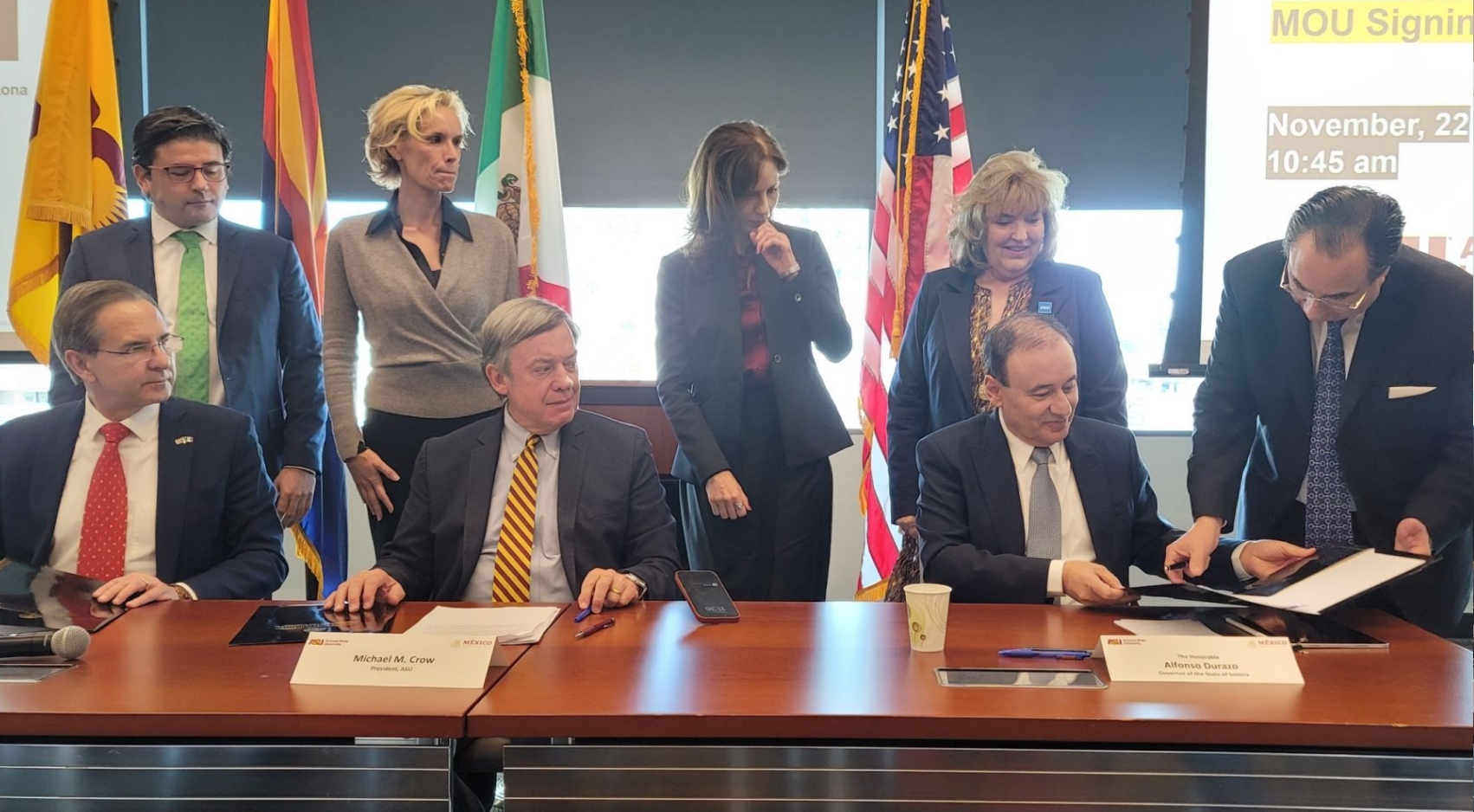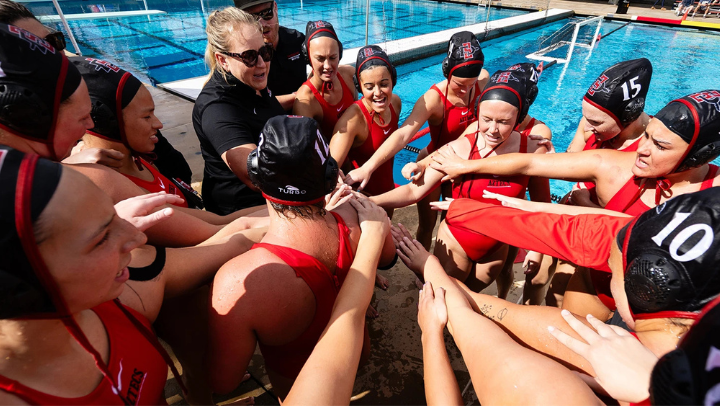From Internship to International Agreement
SDSU Alumnus Octavio Martnez Participates in Semiconductor Cooperation between U.S. and Mexico

Octavio Martínez’s (BSEE ‘92, MBA ‘00) immersion into semiconductors as a San Diego State University student led to a successful career in the field, and a recent high-profile involvement in the binational semiconductor chip agreement between the United States and Mexico.
Electrical engineering alumnus Martínez had what he called the “greatest privilege” of being selected as an honorary witness and signing the memorandum of understanding (MOU) on semiconductor cooperation between the two nations.
Martínez, vice president of Product Integrity Engineering at Microsoft, was approached by the Mexican government to take part due to his involvement in the semiconductor space. He says it all started with SDSU.
Martínez had a bi-cultural upbringing in Tijuana, with family members working in both business and government (a foreshadowing of sorts for his future involvement in the MOU), and with encouragement from his family to always pursue education. As such, he and his brothers, Oscar (civil engineering, ’00) and Omar (business, ’92), also SDSU alums, drove up to San Diego the day undergraduate applications were due to apply for college by hand, filling out the application on the hood of his car.
Once transferring to SDSU in the late 1980s, Martínez participated in the SDSU MESA Program, the Society of Professional Hispanic Engineers (SHPE), and in La Plebe, a professional organization of Latinx/Hispanic Engineering students. “It was a phenomenal source of support,” said Martínez of La Plebe. “Many in my former cohort ended up having very successful careers working at places like NASA, Microsoft, and SDG&E, due in part to the program.”
As a leading authority on semiconductor chips, Martínez said he owes his connection to semiconductor chips to transferring to SDSU. “I’m a big convert of SDSU. It really prepared me for my future career,” he said. Martínez secured his first internship as a test engineer at Brooktree Corporation via a job fair at the Aztec Center, where he used his Electrical Engineering degree to learn about semiconductor chips.
Once graduating and beginning his engineering career, Martínez chose to continue his work at San Diego-based Qualcomm, a then-new telecommunications company. At the time, he says, power or defense were more popular fields: “Nobody had a cell phone yet, but I said, I’m gonna bet my career on telecommunications.”
He chose correctly.
Over his two decades at Qualcomm and Intel, the average consumer became far more likely to have a phone than a computer, and semiconductor chips were in high demand. As fate would have it, he once again found himself using his background in semiconductors and systems at Microsoft in 2021.
When the global semiconductor chip shortage began in 2020, Martínez said the pull was very noticeable: “COVID taught us how important semiconductors are.”
Consequently, the Creating Helpful Incentives to Produce Semiconductors and Science Act of 2022 (CHIPS Act), was signed into law to bring the U.S. full self-reliance on semiconductors and a healthy ecosystem to keep up with demand.
With that, the Mexican government reached out to Martínez at Microsoft and asked for advice regarding how Mexico could partake.
“Mexico has a long, rich background of exports, but has no presence in semiconductors,” said Martínez. He used his expertise to recommend a strategy, developing an academic plan to promote more industry workers and engineers, a fundamental requirement for having sufficient semiconductors.
Through the initiative, Mexico is collaborating with the U.S. to generate the right engineers to support that industry. The strategy “benefits the whole western hemisphere,” said Martínez.
Martínez calls the opportunity to work on the initiative the “bookends of my entire professional experience.” It’s given him the opportunity to enable a bridge between research and production of semiconductor chips.
Alongside the initiative, the future of semiconductors and his family’s SDSU Aztec roots continues. Martínez currently serves on the College of Engineering’s Alumni Advisory. His nephew currently attends SDSU, and his daughter, Alexandra, a senior in high school, has attended SDSU SHPE (Society of Hispanic Professional Engineers) outreach events on campus and applied to SDSU this year.
Moving forward, Martínez looks forward to seeing how the partnership will benefit society at large. “It’s very gratifying,” says Martínez. “It was incredible to participate in Qualcomm’s microchip growth in Asia and China. But I kept thinking, ‘Mexico is right next door. Wouldn’t it be great if…?’ Now, I’m getting the chance.”



